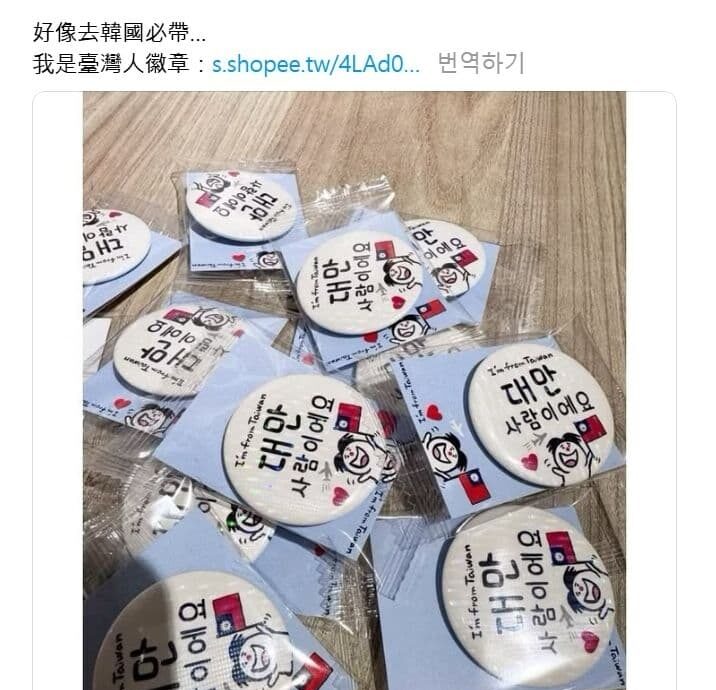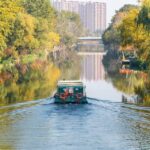Why Taiwanese Visitors Are Wearing Badges in Seoul
Badges reading I am from Taiwan are appearing on backpacks and jackets in Seoul and other tourist hubs. The small buttons carry the Taiwanese flag with the words I am from Taiwan in English and I am Taiwanese in Korean. Taiwanese travelers say the badges help distinguish them during a tense moment in South Korea, where protests targeting Chinese nationals have drawn crowds in central districts. Several violent incidents against Mandarin speakers, rare but widely discussed, have amplified worry. The trend comes as Chinese visitor numbers rebound and streets are busier with tour groups.
- Why Taiwanese Visitors Are Wearing Badges in Seoul
- How a Social Media Post Became a Safety Trend
- Anti China Protests and Policy Backdrop
- Incidents That Heightened Fears
- Tourism Numbers and Economic Stakes
- Identity, Language, and Why Misunderstandings Happen
- How Authorities and Communities Are Responding
- Practical Advice for Travelers
- Regional and Political Context
- Key Points
The current wave started with a short question on Threads: There is anti Chinese sentiment in Korea recently. Should I wear this badge? The post included a photo of the badge. Replies poured in from Taiwan and Korea. Many said locals cannot tell Chinese and Taiwanese people apart by appearance, and that a sticker or pin could help. Others called the idea sad. One user who identified as Chinese asked if wearing the badge might keep him safe.
South Korea’s president has condemned public displays of hate toward people from any country. Yet small but vocal rallies have spread since late September, when the government opened a visa free entry option for organized Chinese tour groups. The effort aims to support tourism and retail. It has also triggered anger from hard line activists who oppose Chinese influence. That mix has created an uneasy setting for Taiwanese visitors who share a language with many mainland Chinese travelers.
How a Social Media Post Became a Safety Trend
The badge design is simple and unmistakable. A cartoon character holds the red, white, and blue flag of Taiwan. English text reads I am from Taiwan and Korean text reads I am Taiwanese. The item is easy to spot on a bag or lanyard. After the social media discussion went viral, the designer reported a sudden jump in orders. Taiwanese users traded practical tips, from where to buy the badge to phrases in Korean that can politely signal origin. Some recalled using similar flags during the early pandemic years in Japan to avoid confusion and discomfort.
Anti China Protests and Policy Backdrop
Anti China street protests in Seoul have ebbed and flowed for years, but they spiked again in recent weeks over the easing of entry rules for Chinese group tours. Demonstrators have gathered near the Chinese Embassy in Myeongdong and in Yeouido. They have displayed placards such as Korea for Koreans and Stop the Chinese Boats. Korean media recorded chants that included racial slurs. The crowds have numbered in the hundreds, not the thousands, yet the optics are worrisome for tourists who stumble into rallies while shopping or traveling between subway stations.
Visa policy at the center
On September 29, South Korea began allowing visa free entry for Chinese tour groups of three or more people. The program is designed to boost visitor spending and will run through June 30, 2026. It sits alongside other measures to revive tourism after long pandemic disruptions. Government data shows Chinese tourists accounted for roughly one third of foreign arrivals as of August. In August alone, about 605,000 Chinese nationals visited, about 1.7 times the figure in January. In October, entries reached more than 525,000, an increase over the prior year.
Official response
President Lee Jae Myung has urged an end to xenophobic rallies and warned that scapegoating foreigners damages the country. He said the government would not tolerate public hate directed at specific nationalities. Police have been instructed by the Ministry of the Interior and Safety to enforce the law when protests cross into incitement or violence.
In remarks this month, President Lee called the behavior harmful to the nation.
“self-destructive conduct that damages the national interest and image”
Incidents That Heightened Fears
Concerns about identity and language are not abstract. In April, a man in his 30s confronted two Chinese women on a Seoul bus because they were speaking Mandarin. He followed them off the bus and assaulted them. Five days later, the same man attacked a Taiwanese visitor outside a restaurant in Mapo District, hitting him on the head with a soju bottle after mistaking him for Chinese. In August, a district court sentenced the perpetrator to 10 months in prison. In its ruling, the court described the crimes as motivated by hostility toward Chinese nationals.
“The defendant harbored hostility toward Chinese nationals and deliberately targeted Chinese individuals at night, which constitutes a hate crime and warrants a severe punishment”
Other episodes have also fed anxiety. In mid September, two Korean men assaulted a Taiwanese content creator in the Hongdae nightlife area after she rejected their advances, leaving her with injuries. Police initially misstated the suspects’ nationality, then corrected the record. Days later in Taipei, an intoxicated Korean man attacked a Taiwanese student near a bus stop, mistakenly linking a T-shirt design to wartime symbolism. These cases are unrelated, yet they highlight how fast misunderstandings and prejudice can tip into violence.
Tourism Numbers and Economic Stakes
Tourism is a major economic engine in South Korea. Retail districts like Myeongdong, Namdaemun, and Dongdaemun depend on foreign shoppers, many of them from mainland China. According to the Korea Tourism Organization and the Ministry of Justice, roughly one in three visitors this year has been Chinese. In August, estimated Chinese arrivals reached about 605,000. October entries came in at more than 525,000. These flows are still rebuilding, but they already surpass some pre pandemic benchmarks.
Policy makers view the visa free program for group tours as a bridge to fuller recovery. Airlines, duty free shops, hotels, and small merchants all benefit when buses return. That logic coexists with hard politics. Many South Koreans hold negative views of China, shaped by disputes over history, trade pressure, and maritime issues. Managing this friction while keeping borders open for business is a delicate job.
Identity, Language, and Why Misunderstandings Happen
Taiwan and mainland China share deep linguistic ties. Mandarin is widely used in both places. Many Taiwanese also speak Taiwanese Hokkien or Hakka. A passerby in Seoul often cannot tell where a Mandarin speaker is from. That reality collides with the heated rhetoric at some rallies, which targets Chinese people as a monolith. The badge becomes a quick way to introduce oneself without a conversation, even if it should not be necessary in an ideal world.
Lin Yung pin, a Taiwanese tour guide who regularly leads groups through Myeongdong, says he advises travelers to keep some form of identification handy, including a badge or a small sign, when crowds gather.
“If they get mistaken as Chinese and harassed, they can show it and be left alone. I also tell people to avoid speaking Mandarin near protests.”
Several Taiwanese visitors report that clerks and drivers respond differently when they can see where a customer is from. Some Taiwanese users describe friendlier service after displaying a small flag or the I am from Taiwan badge. Others prefer to rely on conversation and a quick explanation in Korean.
How Authorities and Communities Are Responding
In early October, the Ministry of the Interior and Safety instructed the national police to take active enforcement measures where rallies veer into hate speech or physical intimidation. The ministry noted that sustained hate events could undermine public safety and damage relations with other countries. Law enforcement has increased monitoring in busy tourist areas and near foreign diplomatic compounds.
Civic leaders and ordinary citizens have pushed back against the protests. Many Koreans have posted messages of apology to affected visitors and urged neighbors to reject blanket hostility. Conservative activist groups continue to organize, but they do not represent mainstream opinion. President Lee has framed the issue as a test of national dignity.
Scholars warn about a pyramid of hate, a framework that tracks how prejudice can escalate over time. It starts with jokes, slurs, and biased language. That escalates into exclusion at school or work, then vandalism or threats. The final stage is outright violence. South Korea is nowhere near the worst end of that spectrum, yet experts caution that normalization of verbal abuse raises the risk of harm.
Practical Advice for Travelers
Most trips to Korea proceed without incident. For visitors who want extra peace of mind, simple steps can help lower risk during a heated news cycle.
- Avoid planned protest areas and any spontaneous gatherings. If you encounter a rally, change direction early and give it a wide berth.
- Carry identification in more than one form, such as a passport copy and a hotel card with contact details.
- Save a short note on your phone that states I am from Taiwan in Korean. Show it only if you need to explain where you are from.
- Travel with a friend after dark in entertainment districts. Choose well lit streets and known taxi stands.
- Call 112 for police and 119 for medical emergencies. Ask hotel staff to help if you need Korean language support.
- Keep your embassy or de facto representative office contact information handy.
- If confronted, avoid arguing. Move toward a store, hotel lobby, or police booth and seek help.
- If you choose to wear a badge, treat it as a conversation starter, not a shield. Stay alert in crowded places.
Regional and Political Context
The badge story is part of a larger moment in Korean diplomacy. President Lee Jae Myung has outlined a pragmatic course with China while keeping the alliance with the United States at the core of security policy. China remains South Korea’s largest trading partner. Seoul is also preparing to host high level visitors in the region around the Asia Pacific economic meetings. Managing protests that target Chinese nationals has become a sensitive task for authorities that must protect free expression and public order at the same time.
Public skepticism about Beijing runs deep. Surveys show large majorities of Koreans hold unfavorable views of China. Anti China slogans resonate with some activists, yet they do not reflect how most Koreans treat visitors in daily life. Taiwan’s profile in Korean culture is generally positive, from food and film to travel. Visitors from Taiwan continue to fill city markets and coastal towns. The vast majority of encounters are polite and welcoming.
Key Points
- Taiwanese visitors in South Korea are wearing I am from Taiwan badges to avoid being misidentified amid a new burst of anti China protests.
- The trend began after a social media post asked whether a badge was needed, sparking a surge in orders.
- Protests grew after South Korea allowed visa free entry for Chinese tour groups of three or more people on Sept. 29.
- President Lee Jae Myung condemned hate rallies as harmful to the national interest and directed police to enforce the law against incitement and violence.
- A Seoul court sentenced a man to 10 months in prison for April attacks on Mandarin speakers, calling the offenses a hate crime.
- Chinese visitors account for about one third of arrivals. August saw about 605,000 Chinese entries, and October exceeded 525,000.
- Badges serve as a simple identity cue in a context where many cannot tell Chinese and Taiwanese travelers apart by appearance or language.
- Authorities and community voices are pushing back against xenophobia, while travelers are advised to avoid rallies and carry clear identification.




